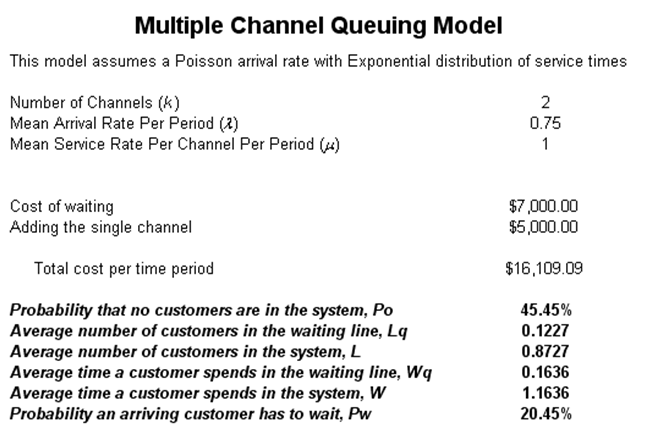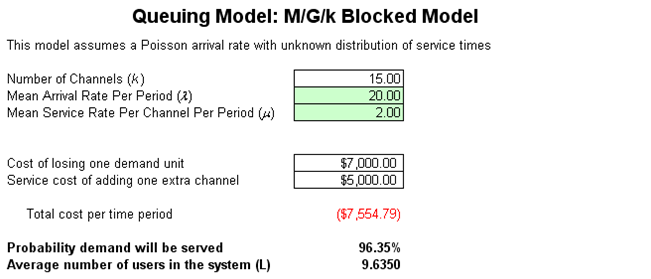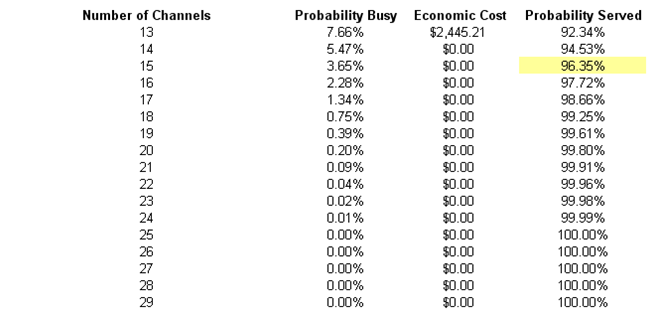File Name: Decision Analysis – Queuing Models
Location: Modeling Toolkit | Decision Analysis | Queuing Models
Brief Description: Sets up and simulates a queuing model, and interprets the results from a queuing model
Requirements: Modeling Toolkit, Risk Simulator
Think of how queuing models work. Consider a call center, available beds waiting to be occupied in a hospital, or a checkout counter at a McDonald’s fast-food restaurant. The queue is the line of people waiting to get served. Typically, the arrival rates of patrons follow a Poisson distribution on a per-period basis, per hour or per day, and so forth. The number of checkout counters open is the number of channels in a queuing model (the rate at which the servers are able to serve the patrons typically follows an Exponential distribution). The questions that a queuing model answers are how many servers or channels should there be if you do not want your patrons to wait more than X minutes, or if we have Y servers, what is the probability that a patron arriving will have to wait and what is the average wait time, and so forth. These types of models are extremely powerful when coupled with simulation, where the arrival rates and service times are variable and simulated. Imagine applications from staffing call centers, customer service lines, and checkout counters to how many hospital beds should exist in a hospital per type of diagnostic-related group, and so forth.
These models are based on operations research queuing models. The Single Channel Queuing model and the Multiple Channel Queuing model (Figure 29.1 shows the multiple channel model) assume a Poisson distribution of arrival rates and Exponential distribution of service times, with the only difference between them being the number of channels. Both the MG1 Single Arbitrary model and MGK Blocked Queuing model (Figure 29.2) assume the same Poisson distribution on arrival rates but do not rely on the Exponential distribution for service times. The two main differences between these two general-distribution (G) models are that the MGK uses multiple channels as compared to the single-channel MG1, as well as the fact that the MG1 model assumes the possibility of waiting in line while the MGK model assumes customers will be turned away if the channels are loaded when they arrive. Spend some time in the models to see various interacting effects of each input on the result.
Running a Monte Carlo Simulation
In all of these models, the results are closed-form. Hence, only the input assumptions (arrival rates and service rates) are uncertain and should be simulated. The forecast results should be any of the outputs of interest.

Figure 29.1: Multiple channel queuing model


Figure 29.2: MGK blocked model

